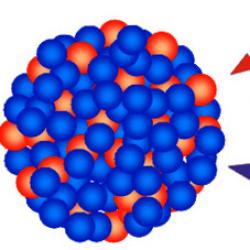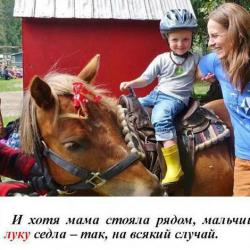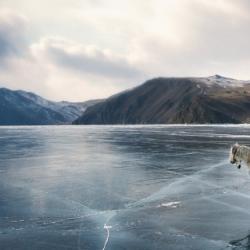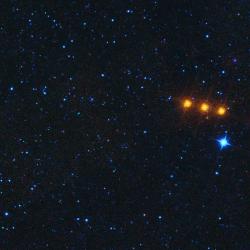Download the presentation on domestic wild animals for preschoolers. Presentation "how animals protect themselves" presentation on the world around them on the topic. Head of the “Magic Brush” circle
"Animals in the Red Book" - Gray Pages -. White pages - the number of animals is small. The world. Yellow Pages - animal numbers are rapidly declining. The Red Book consists of: Red Pages -. Red pages - endangered animal species. Animals appeared on planet Earth earlier than people. Gray pages - animals live in places where humans do not live.
“Red Book of the Tver Region” - State educational institution of higher professional education “TVER STATE UNIVERSITY”. Maintaining the Red Data Book of the Tver Region. Protected natural areas of the Tver region. Distribution of rare species in the Tver region. Dynamics of the Red Data Book of the Tver Region. Creation and replenishment of a data bank on objects of flora and fauna.
“Animals of the Red Data Book of the Kemerovo Region” - In Mountain Shoria - in the upper reaches of the Mrassu and Kondoma rivers. The reason for the disappearance in Kuzbass was direct extermination by people. Reindeer. WHITE CRANE, Siberian Crane. Ospreys are very sensitive to disturbance. Insects. Lenok. Since the early 1990s. single salmon began to appear again near the village of Sheveli and the village of Krapivinsky.
“Amur Tiger” - (I can leave forever...). You mustn’t pollute the nature! You mustn’t make fire in the forest! Develop the figurative perception of a tiger and teach the skills of drawing a tiger (step by step). How to make me? Here I am! Can you do this? You mustn't cut trees! I dance gracefully! Why do you make fire in the forest?
“Red Book of the Chelyabinsk Region” - “Red Book” is a book about animals and plants that are in danger of extinction. What new did you learn today? The red book has different pages: black and red. Sugomak. Found in the lake area. Foxglove grandiflora. Goal: Birds are protected, animals are protected, even flowers are protected!
“Animals of the Red Book of Russia” - International level. National level. Polar bear. How to behave in nature? Project objectives: Extinct animals. Gray pages. Green pages. Bison Little-known animals. The Red Book is a book where plants and animals in need of protection are listed. Yellow Pages. Dying animals.
There are 12 presentations in total
Targetproject: formation of environmental
Cultures of children, expand ideas about
The nature of the native land, about the relationships in it
And about ways to preserve it. Strengthen your skills
Cultural behavior in nature,
Cultivate love for her, intolerance for
To senseless damage to plants and destruction
Birds, animals, insects. Arouse desire
Help her and protect her as much as possible.
Getting to know rare plants and
Animals of the native land and the Red
Book of the Saratov region
Download:
Preview:
To use presentation previews, create a Google account and log in to it: https://accounts.google.com
Slide captions:
ECOLOGICAL project “Take care of our nature!!!” Completed by: teacher of MDOU D\s No. 14 of the city of Marks Murzagalieva O.B.
The goal of the project: to develop children’s ecological culture, to expand their understanding of the nature of their native land, the relationships in it and ways to preserve it. To consolidate the skills of cultural behavior in nature, to cultivate a love for it, intolerance for the senseless damage to plants and the destruction of birds, animals, and insects. Create a desire to help and protect her as much as possible. Acquaintance with rare plants and animals of the native land and the Red Book of the Saratov region.
Nature is our second home. A home where there is always a warm ray of sunshine, birdsong and the murmur of streams. We all admire our nature, but not all of us protect it.
Various birds and animals live in the forests. A variety of plants and trees grow. But people don’t understand this - they destroy and kill animals. In order to sew fur coats, hats, and various accessories. Trees are cut down to build new houses and public spaces.
If all this destruction is not stopped, then in the future we may find ourselves in the Stone Age. And this cannot be allowed. To prevent this from happening, I came up with several rules.
Rules: Know how to behave in the forest, on a walk, outside the city: don’t shout, don’t scare wild animals. They love kind children. Don’t pick the flowers, hundreds of people will follow you, and they will also be pleased to see the flowers. Don’t break trees in vain, don’t make carvings on them. This causes them to dry out and die. Do not catch butterflies, ants and other animals for fun. Don't litter in the forest. Pick up trash and glassware after yourself. A fire in a forest can start from a thrown piece of glass.
Take care of the BIRDS
Fires occur almost every day, and trees gradually burn down. Fires arise from people playing with matches, accidentally spilling gasoline, or leaving a fire unextinguished. Protect the environment!!!
ATTENTION Our Earth is in danger! It is possible that nature is giving us one last chance, and is not just screaming, but moaning: “People, come to your senses!” We put forward the slogan: “Everything to protect nature!”, “Take care of nature!”
Take care of these lands, take care of these waters, take care of all the animals within nature!!! Thank you for your attention!!!
On the topic: methodological developments, presentations and notes
Children and parents environmental project “Take care of nature!”
Formation of children's ecological culture, broadening their understanding of the nature of their native land, the relationships in it and ways of preserving it. Instill cultural skills...
Environmental project “Take care of nature”
Formation of elementary ecological ideas of children of primary preschool age through familiarization with the nature of their native land and fostering a humane attitude towards natural objects...
MBDOU Kindergarten "Teremok"
"Take care of animals"
Project Team Leader
Donina T.A.
Teachers: Kuzmina N.I.
Kislitsina V.G.
Semenova L.V.
Garanina T.A.
Busurina G.N.
Bulina N.A.
Pedagogical problems:
Insufficient cognitive activity in some children in relation to the animal world, lack of desire for further knowledge in 10% of children. Fear of dogs in 8% of children, lack of respect for cats in 2% of children. Low interest among parents in the cognitive development of children. Teachers have not sufficiently mastered such active ways for children to learn about the world around them, such as children's scientific readings and children's project activities.
Children's problem:
We don't know enough about animals. We are a little afraid of them, and we don’t like some of them. We don't know the characteristics of animals.
Pedagogical goal:
To promote independence and initiative, activity of children of the preparatory group for school in learning about the animal world. To promote personal growth, the development of communication skills, and creativity of each child through the creation of situations of success in project activities.
Tasks:
Children's goal:
Find out as much as possible about animals and tell parents, all children and adults in the kindergarten about it.
Project participants: children of the preparatory group, teachers, the “Magic Brush” group, parents.
Types of work for the project:
Distribution of roles in the children's team:
Role
Type of work
Tasks
Collect and study as much information as possible about animals. Prepare messages for all kindergarten children about animals.
Writers
Write stories about animals. Captions for drawings.
Artists
Tell about the animal world through art, using different visual means.
Talk about the animal world in songs, poems and dances.
Prepare a concert for project participants.
Prepare a presentation of the project.
Participation of parents in project activities:
Role of a child
Parents' activities
Help in collecting information from the pages of books and magazines about animals. Assistance in selecting and processing information. Participation in the conference.
Writers
Reading fiction and educational literature about animals. Collaborate on writing stories about your favorite pets.
Artists
Discussion of ideas for creating animal images. Participation in the presentation of the exhibition of children's creativity “My Beloved Friend”.
Assistance in creating costumes and preparing concert numbers.
Assistance in preparing for competitions and presentation of participation in the competition.
Participation of teachers in project activities
Project Manager
Educators
Musical director
Head of the “Magic Brush” circle
Organizational work on the stages of the project, consulting parents and teachers in choosing methods for promoting children's project activities, assistance upon request.
Helping children define children's goals. Assistance in preparing and carrying out all types of work on the project.
Helping children and parents prepare a concert for project participants.
Assisting children in preparing, designing and presenting the exhibition of children's creativity “My Beloved Friend”.
Distribution of work across project stages
Stages
Teachers
Children
Parents
Preparatory
Definition
Definition
Children's adoption
pedagogical purposes,
Problems,
problems and goals,
helping children in
wording
defining tasks for
problem statement and
assistance in
June July
definition of children's
definition
achieving children's
goals, participants
goals in accordance
activities,
with role.
types of work on
role, tasks and
project, role
According to
Organizational
Help for children in
Participation in
Assistance in
preparation for
preparation
achieving children's
achievement of group
activities for
goals through
and individual
achieving
individual
goals and objectives in
goals and objectives in
communication with the child and
in accordance with the role,
According to
participation in
organization
role (see
collective
preparation
table above)
events
activities for
achieving goals
Basic
* assistance
* performance
* Assistance in
fulfillment of all
all types of work
carrying out all
July August
types of work on the project
according to the project
types of work on
project, help
children in accordance
Final
carrying out
Presentation
Participation in preparation
project presentations,
and presentations
encouraging children
project, preparation
targeting
surprises and
further knowledge
gifts for
encouraging children.
Project effectiveness:
1. The development environment in the group has been replenished with magazines:
“All about dogs”, “My favorite animals”, “A cat is a cat”
2. A photo exhibition and an exhibition of children's drawings “Those whom we love and protect” were organized.
3. The didactic game “Find out by description” was designed.
4. The encyclopedias “Animal World”, “All About Dogs”, “Puppies”, “Cats” were purchased.
5. Fiction about dogs, cats, rabbits, and wild animals has been selected and a collection of “Friend” magazines has been collected.
6. Children have increased cognitive activity, a desire to learn new things about animals, they have learned a lot about the breeds of dogs, cats and other animals.
7. Parents took an active part in the project. The “Dog Show” program, where parents, children and kindergarten staff took part, aroused great interest.
8. Children have become noticeably kinder towards animals.
Kislitsyna Valentina Grigorievna
MBDOU "Kindergarten No. 65" Cherepovets.
Lesson on the topic “Take care of animals”
Developed by: teacher Vaganova Natalia Nikolaevna, deputy head Krepysheva Maria Sergeevna
Target: Teach children to love and protect nature.
Tasks:
- foster respect for plants and animals,
- to form the idea that plants and animals need protection and protection,
- give the concept of the Red Book: introduce the plants and animals that are listed in the Red Book.
The lesson uses such principles and methods as connection with life, reliance on children’s personal experience, mastery of the culture of development, accessibility, scientific approach, creative principle (thinking, trying, searching), explanatory and illustrative method. The material for the lesson was selected at a level accessible to children, corresponded to their psychological characteristics and was rational for solving the assigned tasks.
Material:
Layout “Dinosaurs”, “Animals of Forests”, slides depicting ancient animals and plants, animals and plants today, photographs of rare and endangered animals, colored pencils, emblem blanks.
Preliminary work:
Conversations about prehistoric animals, about the natural resources of our Motherland, looking at encyclopedias, watching presentations “Ancient Animals”, “Animal World”.
Expected Result: Children have developed an interest in the surrounding nature. Children's understanding of the diversity of animals has been expanded. Children make their own conclusions about environmental protection and animal life.
Principles and methods used in the lesson:
Connection with life, reliance on children’s personal experience; mastering the culture of development; availability; scientific character; creative principle (think, try, search); explanatory and illustrative method. The age characteristics of children 5-6 years old require the use of a playful form of activity to a greater extent. Acquaintance with new material is carried out on the basis of an activity approach (search method). Pedagogy of collaboration throughout the lesson.
Facilities: Conversation, dialogic and monologue speech, illustrations, answering “in the ear”, ICT technologies.
Progress of the lesson:
Q: We will talk about
That the whole Earth is our common home -
Our good home, spacious home -
We all live in it from birth.
We are also talking about this,
That we must take care of our home.
Let's prove that it's not in vain
The Earth hopes for us.
Q: Once upon a time, planet Earth looked completely different from what it does today. (show the slide, look at the layout) Other trees grew on it and other animals lived on it. Remember what animals inhabited the ancient world? Why did ancient animals disappear? (children's answers)
Q: A lot of time has passed and a great variety of plants and animals appeared on Earth. Look how large and diverse the natural world is! (examining the slides and layout) One can only admire the invention of nature. In ancient times, man approached the kingdom of nature with caution. As time passed, people became more and more bold in using natural resources for their own needs - they exterminated birds and animals, destroyed forests and water bodies. One day people realized that if they do not stop and help nature, then the time will come when life on the planet will be in danger of extinction.
A game situation is played out that an SOS signal has been received.
Guys, do any of you know what this signal means? (Children's answers are listened to).
SOS is an international radio signal. It is served from sinking ships. Everyone who hears him, no matter what language he speaks, no matter what country he lives in, knows: somewhere people are dying, they are asking for salvation. But today I heard this signal not on the radio, it was not transmitted by people. The wind gave me this signal. He broadcast it all over the world, to all people: SOS, SOS, SOS.
This is nature calling for help. Why do you think nature calls for help? children's answers
Nature, like a wounded bird, screams and asks us for help. We must know how to preserve natural resources: forest, water, air, flora and fauna.
Imagine for a moment our planet without the singing of birds, without animals, without communication with them. Imagine that there are no more dogs and cats in our homes and you can only see animals in pictures. Such thoughts do not bring joy, right? (Encouraging children to perform logical, mental operations).
To protect natural resources, they created the Red Book (display of the book and slides); endangered species of animals and plants are listed in this book, which is why it is so large. Each country has its own book. But it can also be compiled in a separate area - so many representatives of wildlife need protection. Why do you guys think the red book is red? (children's answers)
That's right, the red color of the book signals approaching danger, an alarm signal. Stop, look around, think, man! Think about nature! Are we taking too much advantage of her generosity? Children, please watch the video for O. Gazmanov’s song “The Red Book”.
The Red Book has been reprinted many times. Why do you think? (children's answers). Yes, the world is constantly changing, some plants and animals are endangered and need help.
Physical education lesson “Fun in the forest”
The hares got up early in the morning,
They played merrily in the forest. (Jumping in place.)
Jump-jump-jump along the paths!
Who is not used to charging? (Walk in place.)
Here is a fox walking through the forest.
Who's jumping there, I wonder? (Stretching - arms forward.)
To answer the question,
The little fox pulls his nose. (Jumping in place.)
But the bunnies jump quickly.
How could it be otherwise? (Running in place.)
Exercise helps!
And the bunnies run away. (Walk in place.)
Here's a hungry fox
Looks sadly at the heavens. (Stretching - arms up.)
Sighs heavily, (Deep inhales and exhales.)
He sits down and rests. (Sits down and rests.)
Q: Do you want to know who is protected by the Red Book? Listen carefully to the riddle. If you guess right, the answer will be in front of you (using an interactive presentation)
Riddles about the following representatives were used:
Swan, tiger, white bear.
Do you want to become animal advocates and try to help them? Animals turned to us for help, here are their questions:
I don’t bother anyone, I eat mosquitoes. Everyone throws stones at me. Ugly - I know, I'm just singing out loud. (the toad keeps the garden free from worms and caterpillars)
What can you say to these animals?
Of course, everyone needs each other. It doesn't matter whether you're beautiful or not.
Tell me, do those animals that are not listed in the Red Book need our help and protection? (children's answers)
Yes. We also need to take care of the most common animals that live in nature.
Riddles about forest animals. (squirrel, elk, wolf, fox, hare, boar)
Which animal do you recognize (slide show) These animals are constantly in danger. Poachers who destroy some animals lead to the death of others. In nature, everything is interconnected - nothing is unnecessary or useless.
Q: And now I suggest you play the game “Good Animal”
You and I are one big kind animal, let's depict how it breathes (inhale-exhale-3 times). This is how our animal not only breathes, but its kind heart beats so clearly and evenly. We take the breath and heartbeat of this animal for ourselves. Let's take a piece of goodness and warmth from him.
It has long been said: Man is the king of nature. It can both help nature and cause harm.
I offer you the game “Good - Bad”. You need to divide the images into two groups. The green circle on the table represents the positive impact of man on nature, and the red circle represents the negative impact. The result of the game.
Guys, would you like us to make our own “Red Book”, which will be in our group.
(Children's answers are listened to)
Now each of you will choose a picture of an animal that he would like to protect and protect. Then we will collect all the pictures together, and we will have our own group “Red Book”. I've already made the cover.
(Cover shown)
Guys, today we got acquainted with the Red Book, the diversity of animals inhabiting our planet. We talked about the need to protect any animal, regardless of its appearance. You and I can provide all possible assistance to animals by drawing up our own rules for treating animals. (children's work)
Let's take care of the planet, there is no other like it in the world!
We will take care of birds, insects, animals. This will only make us kinder!


Birds of the National Park More than 159 species of birds live in the Mari Chodra National Park. By Decree of the Government of the Republic of Mari El dated September 4, 2001. 37 species of birds were classified as rare and endangered species that are listed in the Red Book of the Republic of Mari El and 11 are listed in the Red Book of the Russian Federation. These are the black-throated loon, black stork, short-tailed snake eagle, osprey, golden eagle, etc.

Birds: Black stork A large and quite beautiful bird, its weight reaches 2.2-3 kg. The feather outfit consists of two colors - black and white. The legs and beak are bright red. The plumage of the head, neck and back is black with a metallic tint, and the belly is white. Juveniles have a grayish-brown color. The black stork is a forest bird. Nest in a tree. Voice: quiet sounds of “che-lin” and a quiet cracking of the beak.


The short-eared owl is listed in the Red Book of the Republic of Mari El. Often sits on the ground. In flight, the underparts of the body and wings appear almost white. The eyes are yellow. Body length up to 40 cm, wingspan up to 120 cm, weight up to 450 g. The nest in the form of a trampled hole is located on hummocks, less often on rotten stumps. Never nests in trees. Unlike other owls, it is regularly active during the daytime. Feeds on small mammals. Periodically catches small birds, frogs, lizards.

The gray shrike is listed in the RME Red Book. The upper side of the body is ash-gray. The bottom one is white. The wings and tail are black. There is a dark stripe at eye level. Found in river valleys. By nature of feeding it is a predator. He catches mice, lizards, birds, insects. Prey is impaled on sharp thorns and branches. It builds a nest in small bushes from twigs and grass stems and lines the inside with feathers and animal hair. The bird uses the sounds of songs of other bird species. Hence its name shrike.

Corncrake is listed in the Red Data Book of the RME. Body length up to 30 cm, wingspan up to 53 cm. Inhabits open grassy spaces (meadows, fields, hayfields). The nest is made on the ground, under dry grass. Active around the clock, but sings more often at night. The flight is clumsy, the legs dangle heavily. The basis of the diet is insects and earthworms. It also eats cereal grains, grass seeds, and frogs.

Mammals of the Mari Chodra National Park The fauna of the national park is diverse and interesting. In the park there are animals characteristic not only of mixed forests, but also of forest-steppe regions. The total number of mammals in the national park is 53, of which 2 are listed in the Red Book of the Russian Federation, and 17 in the Red Book of the RME.

Mammals: Beaver In the oxbow lakes and tributaries of the Ilet River, the beaver brought to the RME from the Voronezh Nature Reserve is found. Beavers are excellent breeders and skilled builders, constructing dams on streams. In summer, beavers feed on aquatic and coastal plants, in autumn and winter - aspen and willow bark. Birch and other trees, rhizomes of aquatic plants.

Mammals: Forest marten Lives in the dense high-trunk forests of the park. It feeds on rodents, hares, birds, berries, nuts and insects. Hunts at night. The den of martens is in a hollow, sometimes in an old nest of a magpie or squirrel. In Ancient Rus', the skin of a pine marten served as a monetary unit (one kun).








